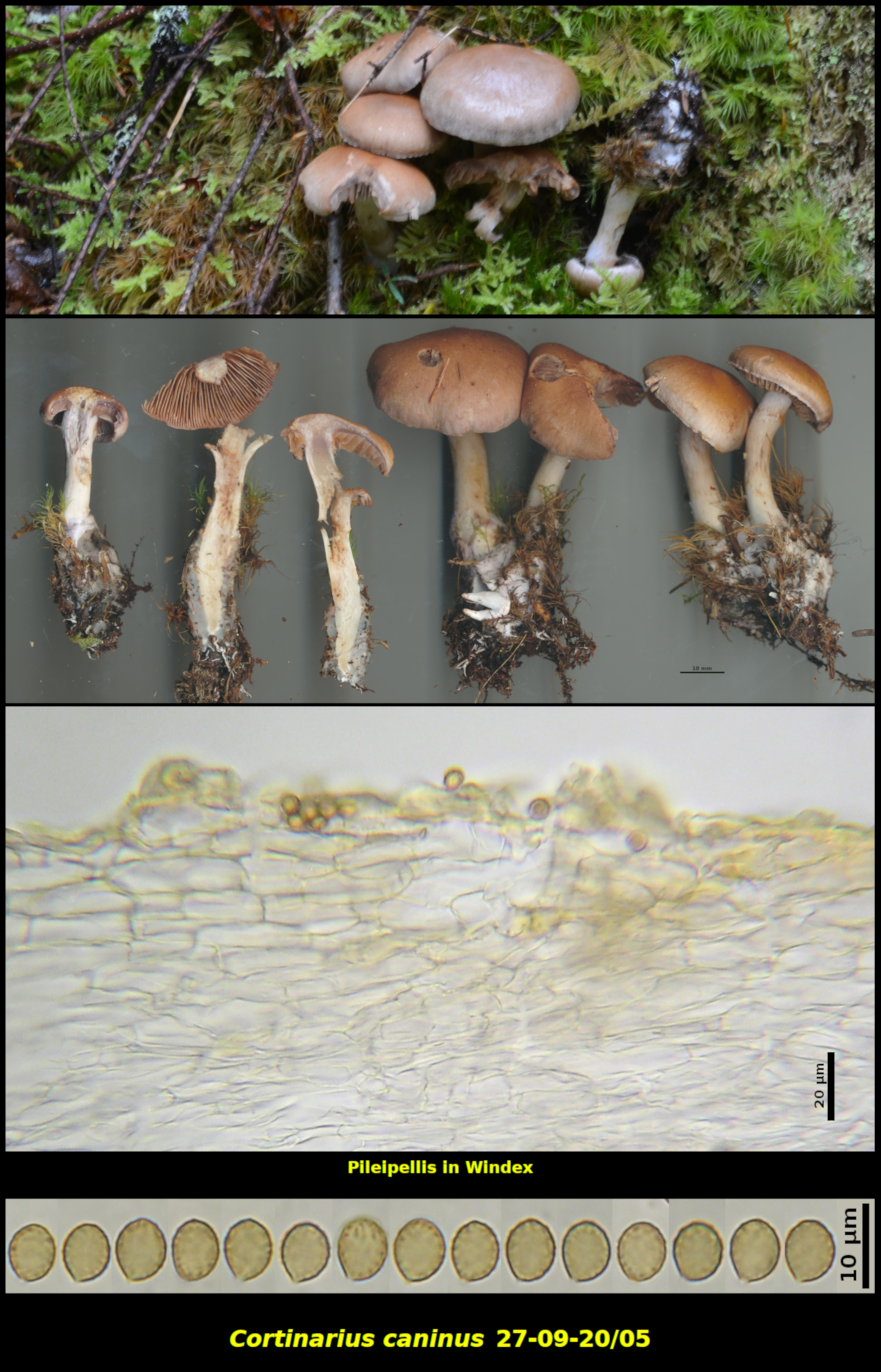Fleshy Fungi of New Brunswick >>
Cortinarius caninus
Cortinarius caninus (Fr.) Fr.

Clustered (6) among Dicranum and Pleurozium mosses, associated with Betula cordifolia and Abies balsamea, Little Lepreau, New Brunswick (27-09-20/05).
Pileus convex, without an umbo, dry, glabrous, light orange brown (HSV30:30:70-90), possibly hygrophanous but only weakly so, 23-41 mm in diameter. Stipe equal down to the swollen base, without a distinct bulb, slightly-white fibrilose but otherwise glabrous, with a moderately well-defined annular zone when young, mostly white, very obscurely violaceous at the apex, dry, 47-78 x 6-8 mm. Lamellae light brown (HSV30:30:60-80), with a very slight violaceous tint, subclose, adnexed, not marginate. Cortina possibly white. Flesh dark bluish grey (HSV280:10:50) in the pileus and upper part of the stipe, paler grey in the rest of the stipe context, concolorous with the surface tissue in the stipe cortex, lacking a distinctive odour and taste.
Basidiospores reddish brown in spore print, subglobose to broadly ellipsoidal, finely echinulate-roughened,6.7-7.5 x 5.3-5.9 μm, Q = 1.16-1.37 (average[38]: 7.1 x 5.7 μm, Q = 1.25. Cheilocystidia lacking. Lamellar trama parallel, with a few adhering colourless crystals but not encrusted with pigment material. Basidia clavate, 4-spored, with a basal clamp connection. Pileipellis a cutis of hyphae 1-2 cells deep overlying a compact subpellis of short broad hyphae, with cuticular hyphae containing a yellowish cytoplasmic pigment. Clamp connections on nearly all hyphae.
Cortinarius caninus can be a difficult species to recognize in the field because it's principal distinguishing features, a brownish universal veil and purple-blue colours in lamellae and stipe, may not be apparent unless you have very young basidiomata. However, under the microscope its very broad basidiospores, typical of the section Anomali of Cortinarius, help to narrow the list of potential species. Cortinarius anomalus is very similar, but has a yellow universal veil, often also difficult to see on mature basidiomata.
Cortinarius caninus, C. anomalus and several other species characterized by broad basidiospores and blue colours in the stipe and lamellae have traditionally been placed in Cortinarius subgenus Telamonia. More recent studies using molecular methods (eg. Peintner et al., Mycologia 96: 1042-1058. 2004.) have shown that they do not really belong with Telamonia at all and seem to form a distinct group. Within Cortinarius they are related to some other species with broadly rounded basidiospores, such as C. delibutus and probably Cortinarius sphaerosporus, formerly placed in subgenus Myxacium but now also relegated to their own clade.
Photograph: D. Malloch (27-09-20/05).